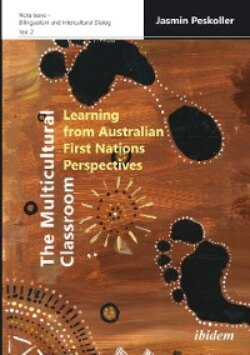Оглавление
Jasmin Peskoller. The Multicultural Classroom: Learning from Australian First Nations Perspectives
Acknowledgments
List of Abbreviations
Preface
Chapter I. Introduction
1. Background and Relevance
2. Approach and Objectives
3. Structure of the Book
Chapter II. Foundations of Multicultural Classrooms
1. Language and Multilingualism
2. Culture and Multiculturalism4
3. Teaching and Learning in Multicultural Classrooms
3.1 Perspectives on Diversity in Education
3.2 Implementing Bilingual and Bicultural Approaches
3.2.1 Two-Way Education
3.2.2 Immersion Education
3.3 Education Policies
Chapter III. Languages and Cultures in Australia
1. Multilingualism and Multiculturalism
2. The Multicultural Australian Classroom
3. Indigenous Australia
3.1 The Bilingual Context
3.1.1 The Significance of Indigenous Languages
3.1.2 The Significance of the English Language
3.2 The Bicultural Context
Chapter IV. First Nations Education in Australia
1. A History of First Nations Education
2. Foundations of Indigenous Teaching and Learning
2.1 Relationships
2.2 Storytelling and Yarning
2.3 The Concept of Shame
3. Proposed Frameworks and Pedagogies
3.1 Eight Ways of Aboriginal Learning
3.2 Culturally Nourishing Pedagogy
3.3 Culturally Responsive Pedagogy
4. Adopted Approaches in Australian Schools
4.1 Two-way Schooling
4.1.1 Two-way Bidialectal Education
4.1.2 Worawa Aboriginal College
4.2 The Stronger Smarter Approach
5. Challenges in Indigenous Australian Education
Chapter V. Research Study
1. Current Research Directions
2. Objectives and Design of the Study
2.1 Procedure
2.1.1 Constructing the Interview Form
2.1.2 Transcribing the Interview Data
2.1.3 Coding the Transcripts
2.2 Sample
3. Findings
3.1 The Role of Indigenous Languages
3.1.1 Pride vs. Embarrassment
3.1.2 Recognition of Linguistic Heritage
3.1.3 Orality of Indigenous Languages
3.1.4 Code-switching
3.1.5 Language Concepts and Worldview
3.2 The Role of Indigenous Cultures
3.2.1 Pride in Culture
3.2.2 Relationship Building
3.2.3 Family and Community Involvement
3.2.4 Home Values and Worldview
3.2.5 Cultural Concepts and Learning Styles
3.3 Frequency Analyses of Language and Culture Categories
3.4 Challenges in Indigenous Education
3.4.1 Historical Burden
3.4.2 Culture-related Differences
3.4.3 Lack of Awareness and Recognition
3.4.4 Systemic Shortcomings in Education
3.4.5 Lack or Stereotypical Inclusion of Culture
3.4.6 Socio-economic and Health Parameters
3.5 Frequency Analyses of Challenge Categories
3.6 Incorporating Indigenous Perspectives
3.6.1 The Importance of Incorporating Indigenous Language and Culture
3.6.2 Strategies for Incorporating First Nations Perspectives
3.6.3 Analysis of the Honey Ant Readers Textbooks
4.1 Summary of Findings
4.2 Discussion of Findings
5. Implications for Teaching Practice
Chapter VI. Conclusion and Outlook
Bibliography
Appendix: Interview Form
